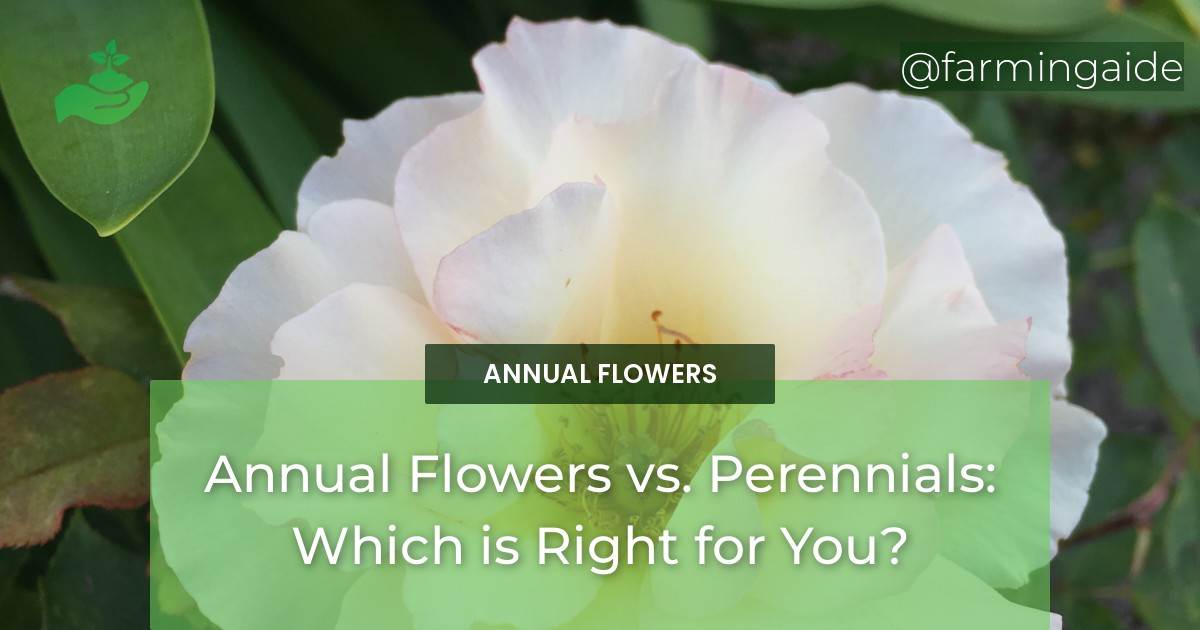Choosing the right flowers for your garden can be a daunting task. There are many factors to consider, such as the climate, soil, and available resources for maintenance. One of the first decisions you must make is whether to plant annuals or perennials. Both have their pros and cons, and the decision ultimately depends on your personal preferences and needs. In this comprehensive guide, we will explore the differences between annual flowers and perennials and provide you with the information you need to make an informed choice.
Understanding the Differences
Definition of Annuals and Perennials
Before we dive into the differences between annuals and perennials, it’s essential to understand what each term means. Annuals are plants that complete their life cycle in one growing season. They sprout from seed, grow, produce flowers, and set seed all within a single year. Perennials, on the other hand, are plants that live for multiple years. They die back to the ground in the winter and regrow from the same roots every spring, producing flowers annually.
Life Span
The most significant difference between annuals and perennials is their life span. As mentioned earlier, annuals complete their life cycle in one growing season. They grow from seed, produce flowers and set seed, and then die, all in a single year. Perennials, on the other hand, live for multiple years. They return every spring from the same roots and continue to grow and flower for many seasons.
Blooming Period
Annuals and perennials also differ in their blooming period. Annuals produce flowers continuously throughout the growing season, usually from late spring to early fall, depending on the climate. Perennials, on the other hand, usually have a shorter blooming period and produce flowers for a few weeks or months each year, depending on the species.
Maintenance Requirements
Another essential factor to consider when choosing between annuals and perennials is their maintenance requirements. Annuals require more maintenance, such as regular watering, fertilizing, and deadheading (removing spent blooms) to promote continuous flowering. Perennials, on the other hand, require less maintenance as they are more established and hardy. Some perennials may require occasional deadheading, pruning, or dividing to promote healthy growth.
Cost Differences
Cost is also a factor to consider when choosing between annuals and perennials. Annuals are usually less expensive than perennials as they are grown from seed and have a shorter lifespan. Perennials, on the other hand, are more costly as they are more established and have a longer lifespan.
Advantages and Disadvantages
Both annuals and perennials have their advantages and disadvantages. Annuals provide continuous blooms throughout the growing season, making them ideal for garden beds and containers. They are also easy to grow and come in a wide variety of colors and sizes. However, they require more maintenance and must be replanted each year. Perennials, on the other hand, are more established and hardy, requiring less maintenance and providing long-lasting beauty year after year. However, they have a shorter blooming period and can be more costly.
Making an Informed Choice
Factors to Consider
When making a choice between annuals and perennials, several factors should be considered. These include the climate, soil type, sun exposure, available resources for maintenance, and personal preferences.
Choosing Annuals
If you live in an area with a short growing season or a harsh climate, annuals may be the best choice for your garden. They are also ideal for containers and hanging baskets as they provide continuous blooms throughout the season. When choosing annuals, consider factors such as color, size, and growth habit. Some popular annuals include petunias, marigolds, and impatiens.
Choosing Perennials
If you’re looking for long-lasting beauty and less maintenance, perennials may be the best choice for your garden. They are also ideal for garden beds and borders, providing year after year of blooms. When choosing perennials, consider factors such as bloom time, size, and sun exposure. Some popular perennials include daylilies, coneflowers, and hostas.
Combining Annuals and Perennials
For the best of both worlds, consider combining annuals and perennials in your garden. Annuals can provide continuous color and fill in gaps between perennials. Perennials provide long-lasting beauty and structure to your garden. When combining annuals and perennials, consider factors such as color, size, and growth habit to create a cohesive and visually appealing garden.
Conclusion
Final Thoughts
Choosing between annuals and perennials can be challenging, but with the right information, you can make an informed choice that suits your personal preferences and needs. Consider factors such as life span, blooming period, maintenance requirements, and cost when making your decision.
Recommendations
- If you’re new to gardening or have limited resources, start with annuals to gain experience and experiment with color and size.
- If you’re looking for long-lasting beauty and structure, invest in perennials that will provide year after year of blooms with less maintenance.
- Consider combining annuals and perennials for the best of both worlds and to create a cohesive and visually appealing garden.
- Remember to consider factors such as climate, soil type, sun exposure, and personal preferences when making your choice.


